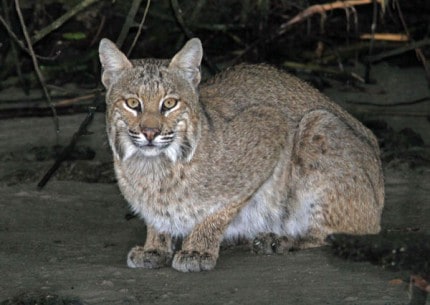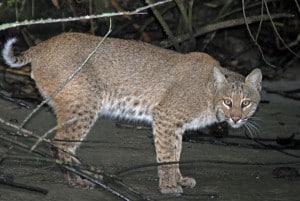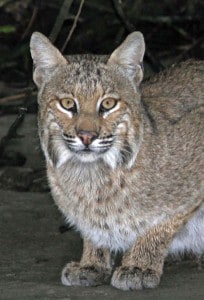
(Chelsea Update would like to thank Tom Hodgson and the Waterloo Natural History Association for the information and photos in this column.)
There are three members of the cat family that were once native to Michigan, the cougar, lynx and bobcat. Although several cougar sightings have been made in Northern Michigan, none have been officially confirmed at this time. A substantial population of lynx still exists in the Upper Peninsula, and the bobcat is fairly common in Northern Lower Michigan.

The bobcat is an animal of forests and wooded, riparian bottomlands. Such habitat is in short supply in Southeastern Michigan. So do bobcats live in the Chelsea area? The answer is yes.
Are we likely to see one, probably not. I have lived in the Sylvan Township for 50 years and have seen just three. All were crossing back roads in the Waterloo Recreation Area in the middle of the night. Others have seen bobcats along the Raisin River south of Chelsea and the Portage River in the northern part of WRA.

I have seen bobcats in broad daylight in the Traverse City area, but have only been successful in photographing them in Florida. The images of the bobcat in this article were taken just before dawn while I was canoeing the Myakka River in Florida. I was fortunate to have a flash on my camera at the time. Bobcats in the northern parts of their range tend to be larger than those in the south, and the spots on their coats are larger and darker as well.
Bobcats are two to three times the size of an average house cat. They may weigh up to 35 pounds and grow to three and a half feet in length. An adult bobcat is a top predator and has no natural enemies except for man. Their short, upturned tail is only 7 inches long and appears to be bobbed, hence the name “bobcat.”
Bobcats are loners except during mating, which usually occurs in March in Michigan. They scent mark their territories with urine and feces, and with scratching posts (trees used to sharpen their claws). The home range of a single individual may be up to 40 square miles. It may cover 6-7 miles in its nightly search for food.

Before sunrise, the bobcat usually seeks shelter in heavy brush, or in a hollow tree, rarely spending two nights in the same location. Bobcats feed primarily on small mammals including the cottontail rabbit, squirrels, mice, voles and shrews.
Female bobcats utilize a dens or hollow trees, but abandon them as soon as their young are old enough to travel. Their nocturnal habits and large territories enable bobcats to go unnoticed most of the time. One is much more likely to hear than see a bobcat. To hear a bobcat; click on the following link, scroll down and select the various sounds.











